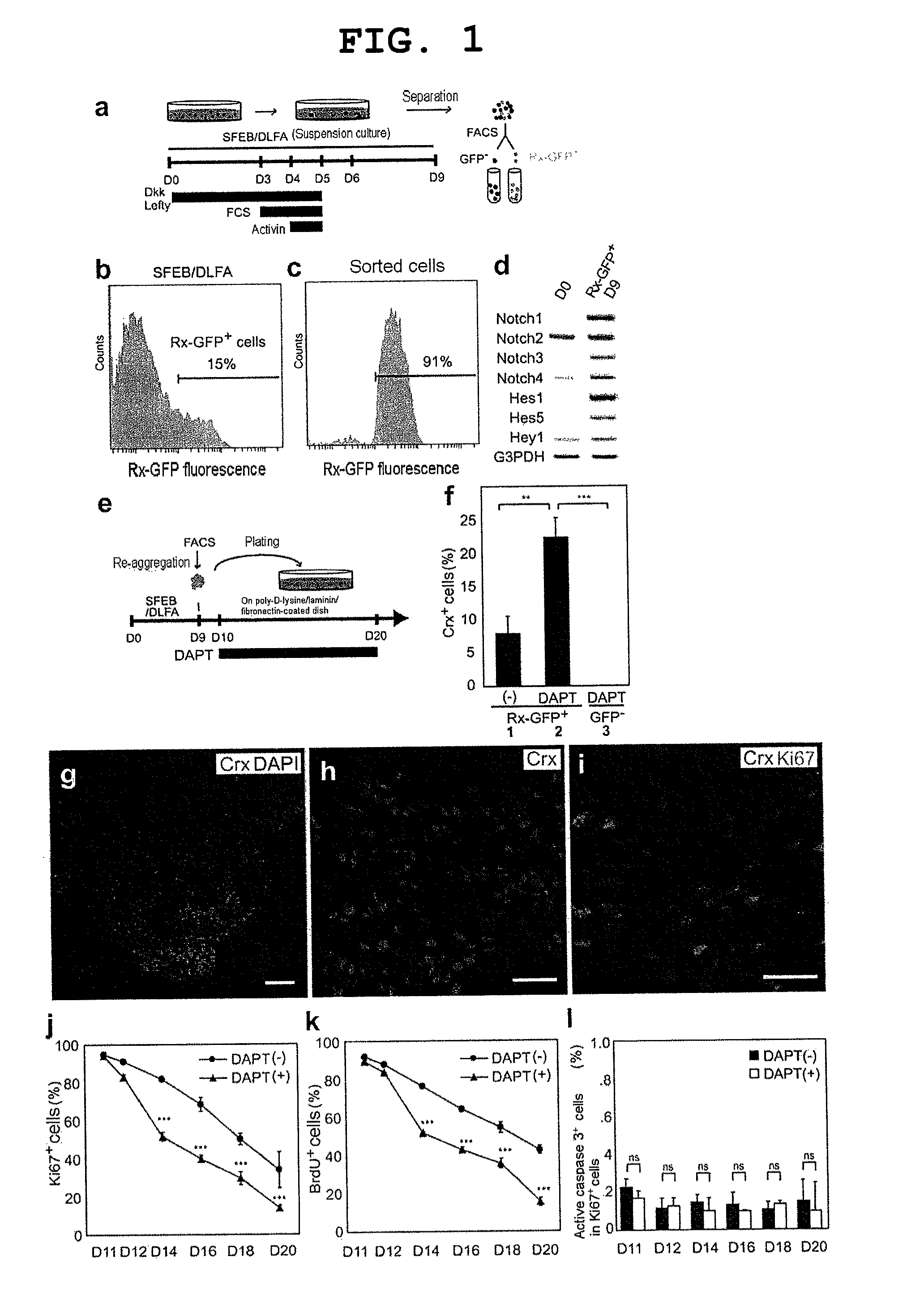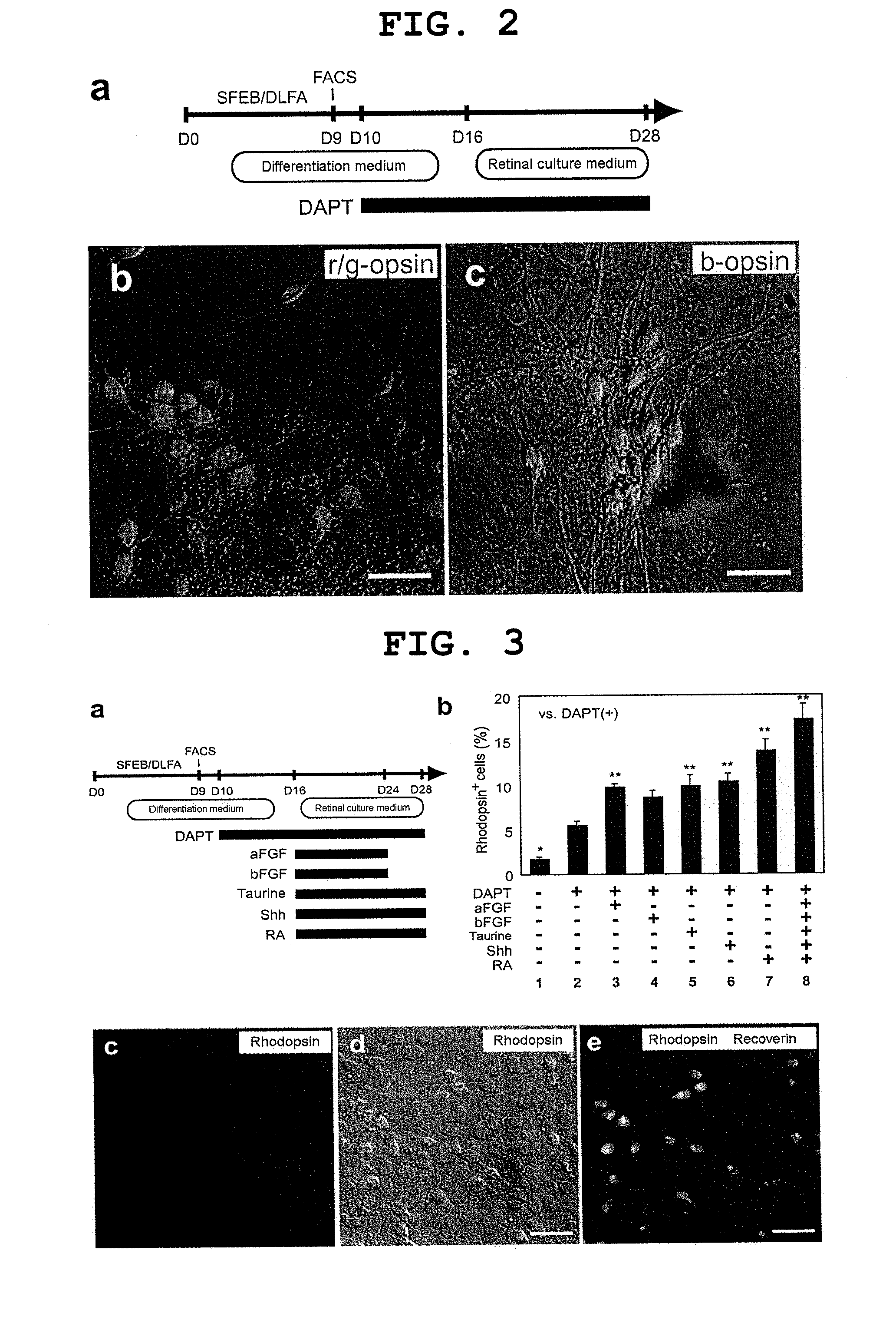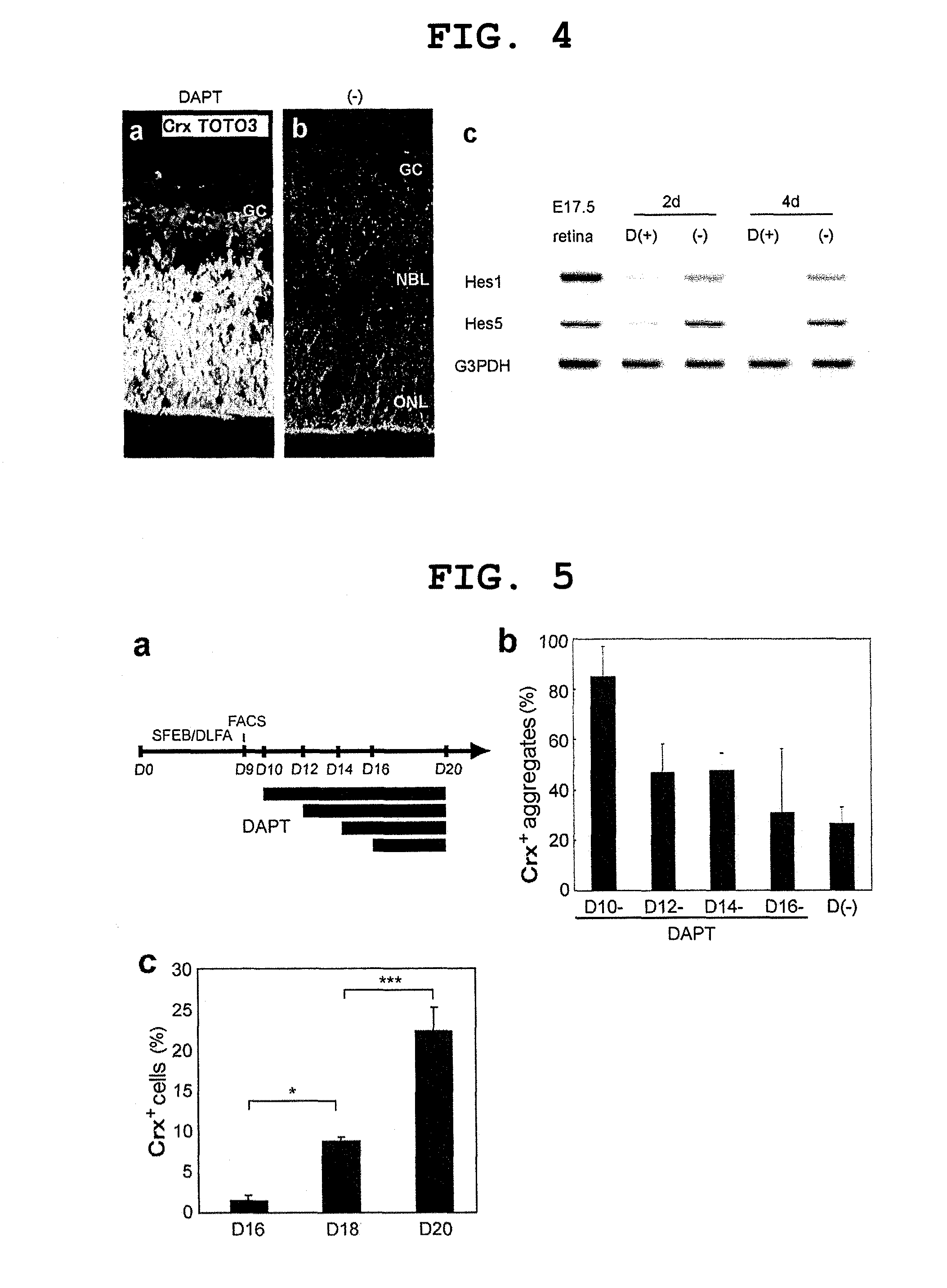Method for induction/differentiation into photoreceptor cell
a photoreceptor cell and induction/differentiation technology, applied in the field of induction/differentiation into photoreceptor cells, can solve the problems of inefficient vitro generation of photoreceptors from es cell-derived progenitor cells, and no method has been established for producing photoreceptors under culture conditions without co-culture, so as to promote the development of transplantation therapies and efficiently generate retinal progenitor cells
- Summary
- Abstract
- Description
- Claims
- Application Information
AI Technical Summary
Benefits of technology
Problems solved by technology
Method used
Image
Examples
example 1
Methods
Cell Culture
[0173]Methods for mouse ES cell maintenance and differentiation in SFEB conditions were previously reported (reference documents A7, 20). For the sake of the SFEB / DLFA, Dkk1 (R & D Systems, 100 ng / ml, during days 0-5), LeftyA (R & D Systems, 500 ng / ml, during days 0-5), 5% FCS (JRH Biosciences, during days 3-5), and Activin-A (R & D Systems, 10 ng / ml, during days 4-5) were added to a differentiation medium (G-MEM, 5% KSR, 0.1 mM non-essential amino acids, 1 mM pyruvic acid, and 0.1 mM 2-mercaptoethanol) (reference document A6).
[0174]For FACS (see below), until day 9, cell aggregates were incubated in a differentiation medium under suspension culture conditions. After FACS, 1−2×104 sorted cells were re-suspended in a differentiation medium containing 10% FCS, and to produce re-aggregated pellets, the suspension was centrifuged at 800 g for 10 minutes. After cultivation at 37° C. for 1 hour, three to five re-aggregated pellets per cm2 were replated on a poly-D-lysin...
example 2
Methods
Maintenance of Undifferentiated Monkey ES Cells
[0200]Two independent cell lines of cynomolgus monkey ES cells (CMK6 and CMK9) were maintained as described previously (reference documents B26, 28, 29). In summary, undifferentiated ES cells were maintained on a feeder layer of mitomycin C-treated mouse embryonic fibroblasts (STO cells). The STO cells were incubated with 10 μg / mL mitomycin C (Wako, Osaka, Japan) for 2 hours and plated on gelatin-coated dishes. The undifferentiated monkey ES cells were incubated in a DMEM / F-12 (Sigma, St. Louis, Mo.) supplemented with 0.1 mM 2-mercaptoethanol (Sigma), 0.1 mM non-essential amino acids (Sigma), 2 mM L-glutamine (Sigma), 20% knockout serum replacement (KSR; Lot.1139720 and 1219101, GIBCO), 1,000 units / ml leukemia inhibitor (ESGRO; Chemicon, Temecula, Calif.) and 4 ng / ml basic fibroblast growth factor (Upstate Biotechnology, Lake Placid, N.Y.). ES cells were passaged every 3 days using 0.25% trypsin (GIBCO) in PBS supplemented with 1...
example 3
[0239]Mouse ES cells were cultured in the presence of SB-431542 (0.1 to 10 μM) and / or CKI-7 (1 to 100 μM) under SFEB conditions. Five days after the start of the culture, the cells were recovered and re-suspended in a fresh differentiation medium, and, to produce re-aggregated pellets, the suspension was centrifuged at 800 g for 10 minutes. After cultivation at 37° C. for 1 hour, three to five re-aggregated pellets per cm2 were replated onto poly-D-lysine / laminin / fibronectin-coated culture slides, along with differentiation medium. After cultivation for 5 days, the cells were fixed and stained with anti-βII tubulin antibody, and the ratio of βII tubulin-positive cells was determined under microscopy. The other experimental conditions were the same as those for Example 1.
[0240]As a result, with the addition of SB-431542 or CKI-7, the number of βII tubulin-positive cells increased (FIG. 10). This shows that SB-431542 and CKI-7 are each capable of enhancing differentiation of neuronal ...
PUM
| Property | Measurement | Unit |
|---|---|---|
| concentration | aaaaa | aaaaa |
| concentration | aaaaa | aaaaa |
| concentration | aaaaa | aaaaa |
Abstract
Description
Claims
Application Information
 Login to View More
Login to View More - R&D
- Intellectual Property
- Life Sciences
- Materials
- Tech Scout
- Unparalleled Data Quality
- Higher Quality Content
- 60% Fewer Hallucinations
Browse by: Latest US Patents, China's latest patents, Technical Efficacy Thesaurus, Application Domain, Technology Topic, Popular Technical Reports.
© 2025 PatSnap. All rights reserved.Legal|Privacy policy|Modern Slavery Act Transparency Statement|Sitemap|About US| Contact US: help@patsnap.com



